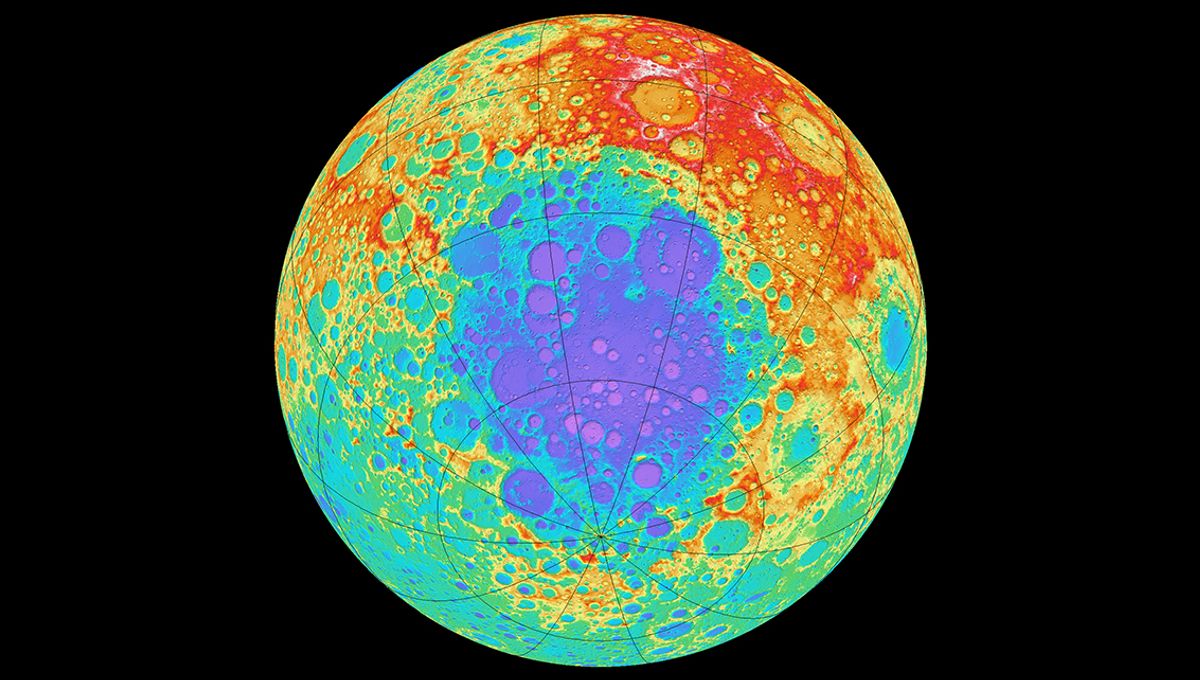
The Moon has one of the largest preserved craters in the Solar System, the South Pole-Aitken Basin, located on the far side of our satellite. The area is central to many investigations, with India’s first lunar lander aiming for the region, Artemis 3 hoping to land humans at the South Pole, and perhaps most curiously, the mass anomaly astronomers found hiding under its surface in 2019.
Planetary scientists discovered a structure that weighs approximately 2.18 billion billion kilograms, and stretches for more than 300 kilometers (186 miles) in depth. They suspect it may contain metal from the asteroid that formed the crater.
“Imagine taking a pile of metal five times larger than the Big Island of Hawaii and burying it underground. That’s roughly how much unexpected mass we detected,” lead author Peter B. James from Baylor University said at the time.
The team used data from spacecrafts that make up NASA’s Gravity Recovery and Interior Laboratory (GRAIL) mission, which measures subtle changes in the gravitational field of the Moon. These observations can be used to study the internal composition of our natural satellite. As it turns out, the mass they measured is enough to weigh the entire basin floor downward by almost a kilometer (more than half a mile). The crater is roughly 2,500 kilometers (1,550 miles) in diameter, so that’s quite the pull.
“When we combined that with lunar topography data from the Lunar Reconnaissance Orbiter, we discovered the unexpectedly large amount of mass hundreds of miles underneath the South Pole-Aitken basin,” James said. “One of the explanations of this extra mass is that the metal from the asteroid that formed this crater is still embedded in the Moon’s mantle.”
The team ran computer simulations to explain the anomaly. It is possible that when the asteroid hit roughly 4 billion years ago, it remained embedded in the mantle rather than sinking into the core. An alternative explanation centers on the solidification of the Moon, suggesting that the concentration of dense oxides might have formed as the magma ocean cooled and settled.
Interest in the South Pole-Aitken Basin from various space agencies is due to how special it is. The region can be used both to understand the interior composition of the Moon as well as to study its history. It is also the best laboratory to study what a catastrophic impact on the surface of a rocky planet would look like.
However, the South Pole is not the only part of the Moon hiding huge curious structures underneath its surface. Astronomers announced the discovery of a massive heat-emitting mass under the Compton and Belkovich craters on the far side of the Moon just last month.
The study was published in Geophysical Research Letters.
An earlier version of this article was published in 2019.
Source Link: Enormous Structure Found Hiding Under The Surface Of The Moon